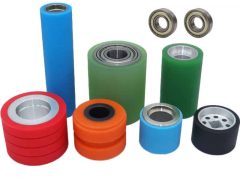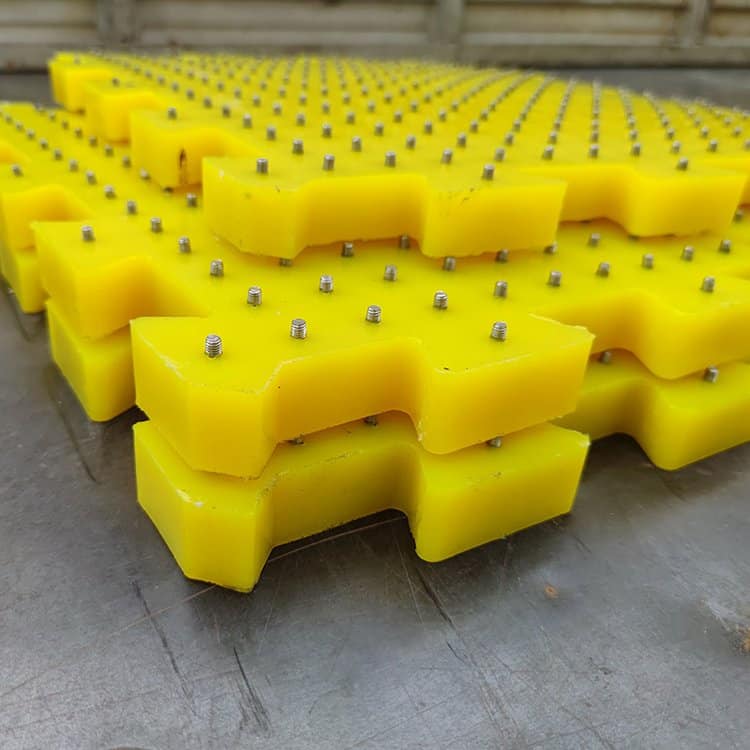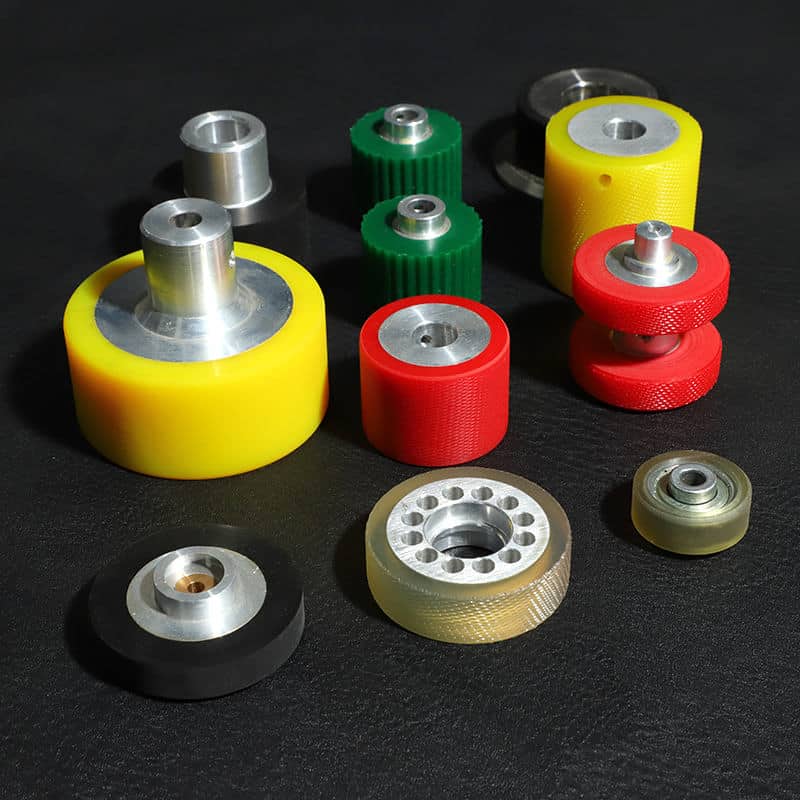
Polyurethane
Polyurethane is a unique material that has many uses and applications. One of the most common uses of polyurethane is in furniture, such as couches, chairs, and mattresses. Due to its versatile properties and ability to retain shape over time, it is an ideal material for use in furniture upholstery. Polyurethane foam has a high resistance to abrasion which allows it to retain its shape even after prolonged use while also providing cushioning and comfort. Additionally, polyurethane can be easily dyed or painted to match any color scheme or design desired by the user.
The second most common use for polyurethane is insulation. Polyurethane foam can be sprayed onto the walls of homes to provide insulation from heat and cold air, making them more energy efficient than traditional insulation materials. It can also be used as an acoustic barrier for soundproofing rooms or other enclosed areas where noise reduction is desired. The flexibility of polyurethane makes it suitable for insulating hard-to-reach areas such as corners where traditional materials may not fit well or perform adequately. Finally, due to its water resistant properties, polyurethane foam can also be used in roofing applications to help protect against moisture damage caused by rain or snow.
Uses in Drill Rig Floor Mat

Drill rig floor mats are mostly made of polyurethane and they can come in many different shapes and sizes. These mats offer a great deal of protection to the flooring beneath them, as well as protecting the drill itself from damage due to wear or vibration. They are also useful for providing traction in wet or icy conditions. In addition, these mats can be used to help reduce noise pollution from the drill. The polyurethane material is flexible yet strong, making it an ideal material for these types of applications. Polyurethane can also be customized with logos or text for added safety measures or branding purposes on the work site. Additionally, these mats can provide insulation against heat and cold, helping keep employees safe while working outdoors in extreme temperatures. Finally, since polyurethane is highly durable and resistant to corrosion, it makes drill rig floor mats long-lasting solutions that won’t need to be replaced often.
Uses in Anti-Slip Pad
Anti-slip pads are most commonly made from polyurethane, a foam material that offers excellent cushioning and anti-slip properties. These pads offer great protection against slips and falls due to their increased friction between the feet and the padded surface. As such, they are commonly used in sports facilities, industrial areas, playgrounds, commercial spaces, and more. Additionally, these pads can be used to protect furniture legs on hard surfaces by reducing vibration damage and preventing scratches. Anti-slip pads come in different sizes and thicknesses to accommodate various applications such as door mats or chair covers for slippery surfaces like wood or tile flooring. They also provide improved safety on wet surfaces and can even help reduce noise levels if placed near speakers or other sound equipment. The versatility of this product makes it a great choice for many applications where slip resistance is needed.
Uses in Impact Bed
Impact beds are one of the most common uses for polyurethane. These impact beds are designed to absorb shock and reduce vibration when heavy loads pass over them. The polyurethane material is a great choice because it is lightweight, durable, and resistant to wear. Impact beds also help protect against noise pollution as they dampen vibrations from passing vehicles and machinery. Additionally, these impact beds can be custom molded to fit any size or shape of conveyor belt or roadway. They provide superior cushioning and protection in all kinds of industrial settings where loads are subject to heavy impacts such as mines and ports. Polyurethane impact beds have proven themselves as reliable solutions for improving transportation efficiency while reducing maintenance costs associated with traditional materials like steel or rubber.
Uses in Clothing: Textiles and Performance Gear
Polyurethane is a versatile material with many uses in clothing. It can be used to create lightweight yet durable fabrics, such as faux leather, which is often used in jackets and coats. The material is also commonly used to give clothes a waterproof coating, making them suitable for wet weather wear. Polyurethane has been known to last up to five times longer than traditional fabrics before it needs replacing due to its durability and water resistance. In addition, some polyurethane fabrics are treated with special chemicals that make them flame retardant, making them an ideal choice of fabric for protective garments or uniforms. Finally, polyurethane’s ability to hold shape makes it an ideal choice for creating elastic straps or other details on clothing such as gloves and hats that require a snug fit.
Uses in Furniture: Upholstery and Foam Cushions
Polyurethane is one of the most popular materials used in furniture-making due to its versatility. It can be used in a variety of ways, from cushioning and padding to structural elements. Polyurethane foam is often used as a cushioning material because it’s lightweight and has great insulation properties. It is also resistant to moisture and fire, making it an ideal choice for upholstered furniture. It can also be formed into various shapes for creative designs or comfort features such as armrests or headboards. Wood panels bonded with polyurethane adhesive are commonly found on furniture frames, providing a strong bond that resists movement over time. In addition to being waterproof, this type of bond adds strength and durability to the frame which makes it a better choice than standard screws or nails for connecting furniture pieces together. Finally, polyurethane finishes are highly sought after by consumers due their glossy appearance and resistance to fading from sunlight exposure or scratching from everyday use.
Uses in Automotive: Seals and Bumpers
Polyurethane is used in a variety of automotive applications, from interior parts and components to exterior body panels. In the interior, it is commonly used for seats, door panels and instrument panels. Polyurethane provides a comfortable feel for seating surfaces and can resist wear and tear better than other materials such as vinyl or leather. It also provides noise reduction benefits due to its dampening properties. On the outside of the vehicle, polyurethane is most often used as a flexible component on bumpers, fenders and side skirts. This material offers protection against minor impacts while also providing flexibility that allows these parts to absorb some energy from larger collisions with minimal damage. Additionally, polyurethane can be used in wheel wells where it helps reduce road noise and creates more efficient airflow around the tires for improved aerodynamics.
Uses in Construction: Insulation and Structural Support
Polyurethane is used extensively in construction projects as a form of insulation, waterproofing, and soundproofing. It is often used to protect the interior of buildings from the elements while providing energy efficiency. Polyurethane can also be applied as an adhesive or sealant between two surfaces, such as concrete or wood, creating a strong bond. This makes it ideal for use in flooring and roofing systems, where it helps prevent water infiltration and improve thermal insulation performance. Additionally, polyurethane can be sprayed onto walls to create a more effective heat barrier; this is particularly useful when working on projects that require high-efficiency insulation ratings. Finally, polyurethane foam can also be injected into foundations to fill any voids and increase structural integrity against moisture penetration and movement caused by seismic events.
Uses in Food Packaging
Polyurethane is a versatile material that has many uses in food packaging. It is often used to produce flexible and lightweight materials that are strong, durable and resistant to moisture. Polyurethane is also commonly employed as a sealant or adhesive in the manufacturing of food packaging products. This helps reduce contamination, add strength and extend shelf life. Additionally, polyurethane can be used for insulation purposes such as preventing heat from escaping or entering a package. This makes it ideal for shipping frozen foods over long distances without spoilage or damage during transit. Finally, polyurethane’s resistance to water vapor makes it an excellent option for keeping food fresh longer by locking in flavor and maintaining texture.
Medical Devices: Implants and Prosthetics
Polyurethane is a polymer that has many versatile applications, including medical device engineering. In the medical field, polyurethane is used for both implants and prosthetics. Implants are devices surgically placed in the body to provide support or replace an existing organ or tissue. Polyurethane materials are used as implantable devices due to their biocompatibility and ability to resist wear and tear from normal body movements. It is also known for its flexibility, allowing it to conform better to the shape of the body than other materials. Prosthetics are artificial limbs designed to help people with physical disabilities perform daily activities. Polyurethane prosthetics offer superior comfort compared to traditional options such as metal joints because they absorb shock and vibrations more effectively, reducing pain and fatigue in patients during use. Furthermore, polyurethane provides increased durability since it can withstand more harsh conditions than other materials like plastic or rubber.
Benefits for Polyurethane
Polyurethane is a highly popular material used in a great variety of applications due to its versatile properties. It is valued for its strength and durability, as well as its ability to be molded into different shapes and sizes. One of the most common uses of polyurethane is for cushioning and padding, such as in furniture, bedding, and clothing.
Polyurethane foam has excellent shock-absorbing qualities, making it ideal for high impact activities like running or sports. The material can also be used for insulation in buildings since it retains heat very well. In addition, polyurethane can be used to create parts that need to hold up against wear and tear, such as tubing or hoses used in industrial applications.
Polyurethane is also increasingly being used in green building projects due to its low environmental impact when compared with other materials like plastic or metal. The lightweight nature of the product makes it easy to transport without consuming large amounts of energy or resources during production process. Additionally, polyurethanes are biodegradable which helps reduce their carbon footprint even further.
Conclusion: Most Common Use of Polyurethane
One of the most common uses for polyurethane is insulation. It is used in a variety of applications from walls and roofs to air conditioning systems, heating systems and other energy-saving technologies. Polyurethane foam insulation is lightweight, has excellent thermal resistance, low permeability and exceptional sound attenuation properties. In addition, it can be non-flammable and self-extinguishing when exposed to heat or flame.
Another common use for polyurethane is in furniture production. It is used to produce cushions as well as frames and structural components of chairs, sofas and beds. Its cushioning properties make it suitable for furniture use while its strength makes it suitable for structural purposes too. Polyurethane foam also offers superior comfort – making it ideal for seating applications such as office chairs or couches.
Lastly, polyurethane can be found in countless consumer products ranging from shoe soles to car parts like door panels or dashboard trims. It provides protection against wear and tear while being flexible enough to absorb impacts without breaking or tearing easily – making it ideal material for a range of consumer goods that need long lasting performance with minimum maintenance over time.























